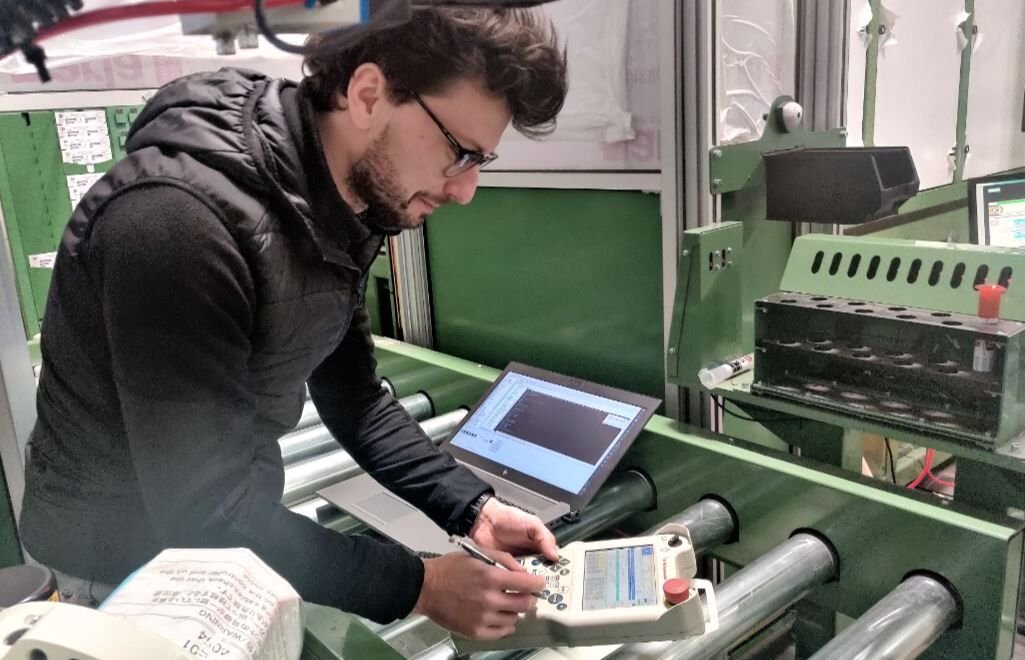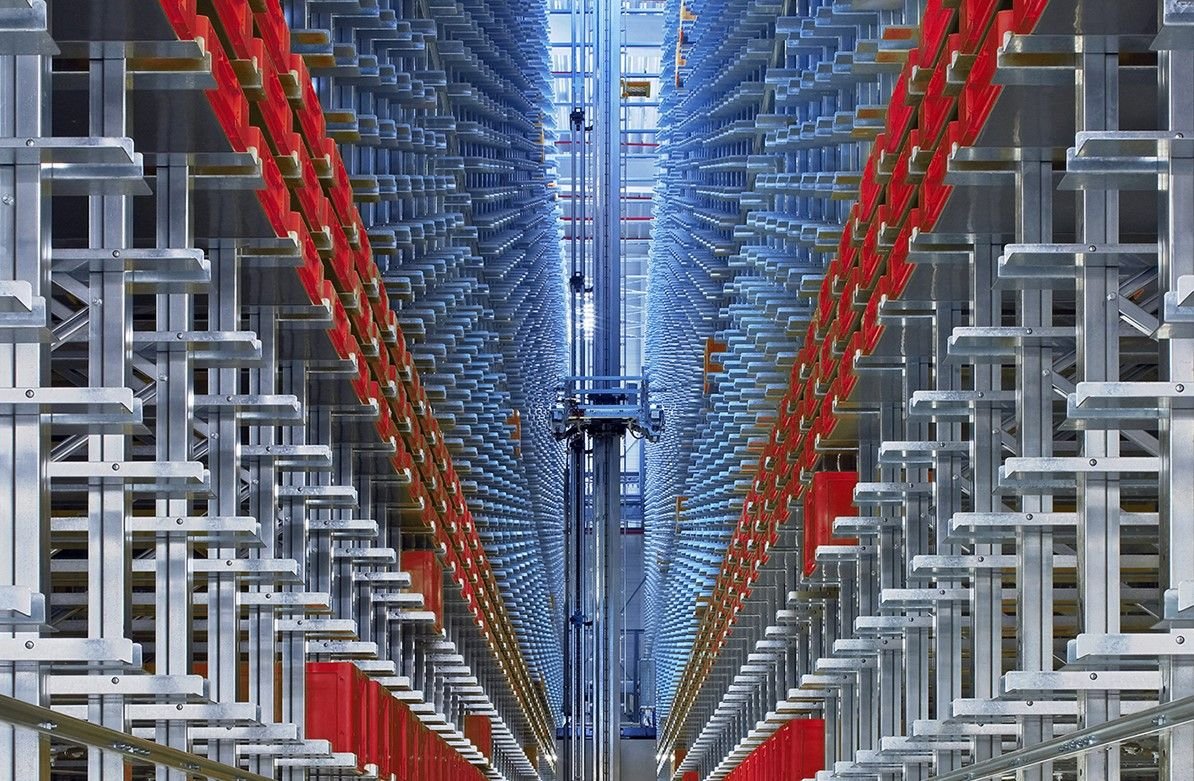A belt conveyor system functions as a critical mechanical apparatus facilitating the continuous movement of materials from one point to another. Operating on the principle of an endless loop created by a flexible belt stretched over a series of pulleys, the motion is provided by a drive motor.
This versatile conveyor system finds applications across diverse industries, including manufacturing, warehouse management, packaging, mining, and food processing.
The Role of Belt Conveyors in Logistics and Warehousing
Efficiency, speed and precision in the modern logistics and warehousing industry is paramount. Belt conveyors are a great way to optimise material handling processes, offering a versatile and reliable solution to the complex challenges faced by logistics professionals and warehouse managers.
Belt conveyors serve as the backbone of material handling systems in logistics and warehousing. These systems facilitate the seamless movement of goods, packages, and materials throughout various stages of the supply chain. The continuous and automated nature of belt conveyors allows for a smooth flow of items, minimising the need for manual intervention and reducing the risk of errors. This efficiency is particularly crucial in large-scale distribution centres and warehouses where the timely movement of goods directly impacts operational success.
With the ever growing online e-commerce sectors and businesses such as Amazon that offer next day and even same day delivery in certain cases, consumer expectation for quick deliveries are higher than ever, incorporating belt conveyors in order fulfilment will make a significant improvement to efficiency and client satisfaction.
These conveyors play a key role in sorting and transporting products to designated areas for packaging and shipping. By automating the order fulfilment process, belt conveyors contribute to faster turnaround times, increased order accuracy, and improved customer satisfaction.
Versatility in Handling Diverse Products & Space Optimisation
Logistics and warehouse operations manage a diverse range of products, each differing in size, shape, and weight. Conveyor belts are designed and manufactured to be versatile, ensuring efficient handling of various product types.
These systems cater to a wide spectrum of items, from small packages to bulky or delicate goods. To meet the unique requirements of each item, conveyor systems can be customised with various belt types, widths, and configurations, ensuring optimal transport and handling.
Belt conveyors are space-efficient solutions that make the most of available warehouse space. In contrast to traditional manual handling methods or static storage systems, conveyor systems allow for a more compact and dynamic layout. This optimisation of space is crucial in crowded distribution centres where maximising storage capacity and minimising travel distances can significantly enhance overall efficiency.
Components of a Belt Conveyor System
Belting
The conveyor belt acts as the primary moving carrier, facilitating the material’s journey through the handling system. Made from materials like rubber, PVC, urethane, leather, or other substances tailored to specific applications, the belt selection involves key considerations such as strength, abrasion resistance, flexibility, and the need for resistance to factors like oil or heat.
| Carcass | Internal reinforcement plies, often made of materials like nylon, cotton, or steel cord, provide essential tensile strength. |
| Covers | Outer layers that protect the carcass. The properties are determined by the rubber compound type. |
| Cleats | Lugs attached or extruded on the belt surface to grip materials during transportation. |
| Supporting Components | Belt conveyors incorporate various supporting components to maintain belt alignment, guide material, and reduce wear and tear. |
| Pulleys | Cylindrical wheels supporting and guiding the belt. Drive pulleys are powered, while idlers rotate freely on bearings. |
| Impact Beds | Cushion idler sets designed to absorb impact and prevent belt damage from large falling materials. |
| Skirting | Containers along the belt edges to prevent spillage and guide material placement. Rubber or urethane skirting is often used for abrasion resistance. |
| Scrapers | Blades pressed against pulleys to clean and prevent the buildup of conveyed materials. |
| Drive and Structural Elements | These components form the framework and power transmission system. |
| Conveyor Frame | Provides support for mounting the belt, pulleys, and accessories. It can be modular or customised in steel or aluminium designs. |
| Drive | The power source, which can be an electric motor, hydraulic motor, or pneumatic cylinder, propelling the drive pulley through a gear reducer. |
| Take-up Device | Facilitates adjustments in belt tension for proper power transmission and tracking. |
| Guarding | Enclosures that surround dangerous pinch points and rotating parts for safety, typically in modular panel form. |
| Idlers | These are essential components placed along the conveyor path to support the belt and provide a smooth transition between the pulleys. |
| Chutes | Designed for the controlled discharge of materials, chutes play a crucial role in guiding materials from the conveyor belt to their intended destination. |
| Belting Fasteners | These secure the ends of the conveyor belt, ensuring a continuous loop and allowing for easy maintenance and replacement. |
| Drive Pulley | Connected to the drive, the drive pulley imparts motion to the conveyor belt, enabling the material’s continuous transport |
| Take-up Mechanism | Maintains proper tension in the conveyor belt, ensuring optimal performance and preventing slippage or mistracking. |
At L-A-C we understand how each component works and depending on your requirements, we can design bespoke conveyor systems that ensure efficient material transport tailored to your specific application demands.
Troubleshooting and Solutions
Should issues arise with conveyor belts, L-A-C’s technical experts offer invaluable assistance in resolving problems including wear, mistracking, damage, jamming, or noise.
By diagnosing the issue, they recommend conveyor belt solutions to restore performance and reliability, ensuring a seamless and efficient operation of conveyor systems. For any conveyor-related challenges, L-A-C stands as a reliable partner, committed to enhancing the functionality of material handling processes.


